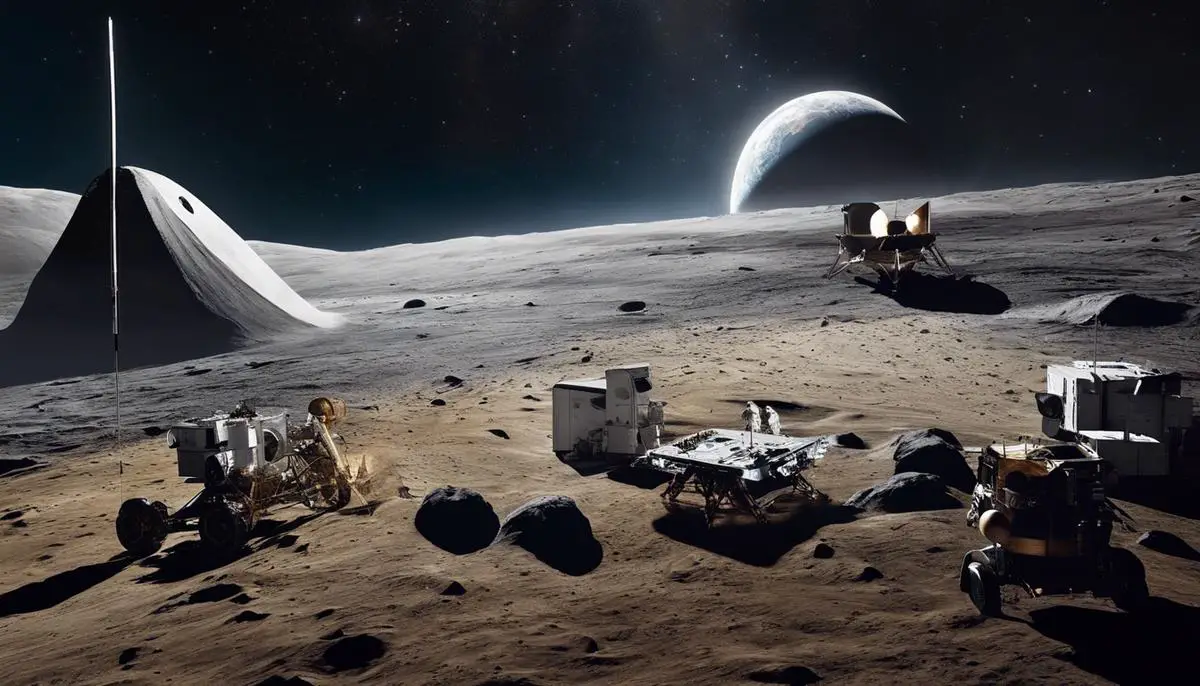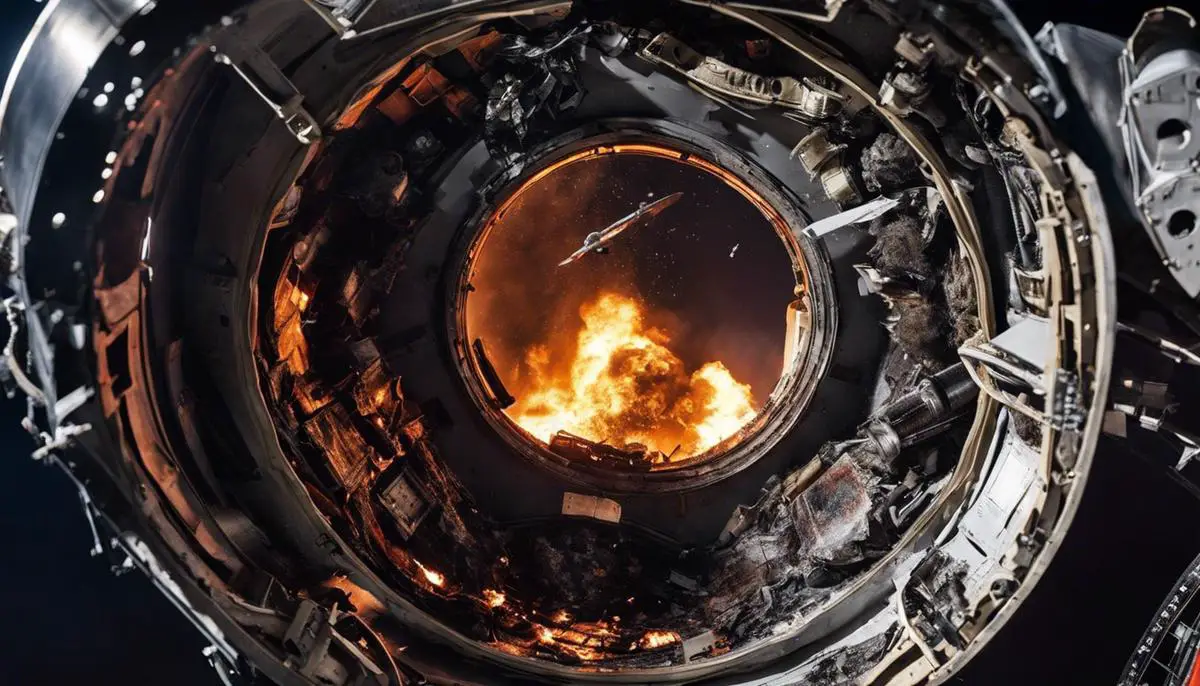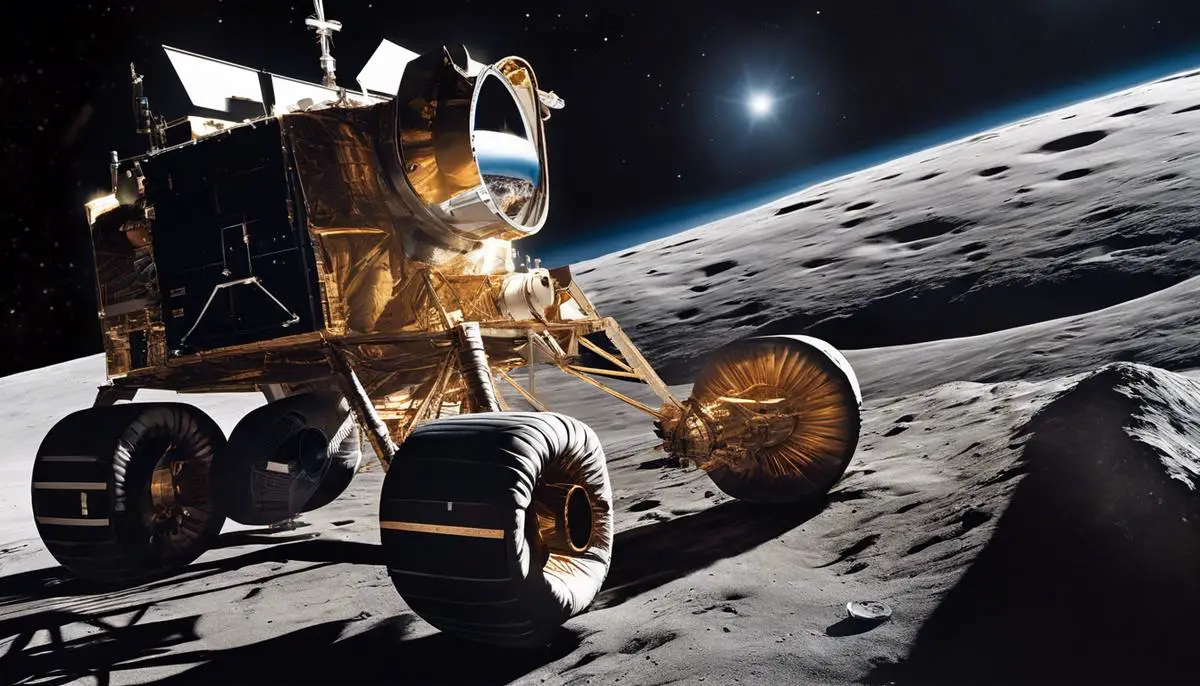The Apollo 1 mission, an integral part of NASA’s Apollo program, stands as one of the most significant chapters in the annals of humankind’s exploration of outer space. This mission, ambitious and path-breaking in its vision, aimed to bold new heights in its endeavor to expand our understanding of the universe. However, it is also remembered for the tragic mishap that claimed the lives of its crew members, altering the course of space missions that followed. This comprehensive exploration into the historical backdrop, incident, and aftermath of the Apollo 1 disaster, its portrayal in documentaries and movies, as well as its profound scientific significance will provide a broad spectrum understanding of this pivotal event in space exploration.
Contents
Historical Background of Apollo 1
In the annals of human achievement, the Apollo 1 mission, signified not just an ambitious endeavor to push the frontiers of space exploration, but also encapsulated the indomitable human spirit.
The genesis of Apollo 1, previously named “Apollo Saturn-204”, is deeply intertwined with the course of history, politics, and scientific development.
The inception of Apollo 1 cannot be understood without reference to the geopolitical landscape of the 20th century. The mid-twentieth century marked the advent of the Cold War, a silent confrontation between two superpowers, the United States and the Soviet Union. The “space race” – an intense competition to claim dominance in space exploration emerged as a significant front in this Cold War, with both nations striving to prove their technological prowess and ideological superiority.
The Soviet Union made an impressive statement by successfully launching Sputnik, the world’s first artificial satellite, in 1957. This development precipitated a serious introspection within the corridors of power in the United States, culminating in a renewed vigor to establish their own supremacy in space. The National Aeronautics and Space Administration (NASA) was established in 1958 as a direct response, marking a significant turning point in the history of American space exploration.
The Apollo program was an embodiment of this competitive spirit and the collective American ambition to land a man on the moon. The audacious decision to aim for a lunar landing was announced by President John F. Kennedy in 1961, setting in motion a relentless race against time and resources.
Apollo 1, designed as the first crewed mission of NASA’s Apollo program, epitomized a mission that was daring and fraught with tremendous risk. Originally planned as a low Earth orbital test of the Apollo command and service module, the objective was to ascertain the efficiency and adequacy of the spacecraft systems. NASA expected this mission to serve as a precursor for subsequent Apollo missions, providing critical insights into the functionality of key spacecraft systems under real-world conditions.
However, tragically, years of hard work and anticipation ended in disaster before it could launch. During a pre-launch rehearsal test on January 27, 1967, a fire in the Apollo command module claimed the lives of astronauts Virgil I. “Gus” Grissom, Edward H. White, and Roger B. Chaffee. This pivotal incident triggered a thorough reassessment of NASA’s safety protocols, design flaws, and operational procedures, causing a significant delay in the Apollo program.
Ultimately, even in tragedy, the legacy of Apollo 1 has had a profound impact on space exploration. The lessons learned from the Apollo 1 mission instigated fundamental changes in spacecraft design, manufacturing, and operational processes, setting the stage for the successful lunar landing of Apollo 11 in 1969.
In essence, the historical context surrounding the inception and mission of Apollo 1 reflects a challenging phase of human history, replete with political rivalry, technological innovation, tragedy, resilience, and the unyielding human ambition to explore the unknown frontiers of space.

Incident and Aftermath of Apollo 1 disaster
The Apollo 1 disaster was a result of numerous factors and complexities, some of which originated from the conceptual commencement of the mission itself. The pioneering working conditions, tremendous pressure to surpass the Soviet Union, and strict schedule were foundational elements that contributed significantly to the disastrous event. Each of these subtextual elements can help us contextualize the series of unfortunate occurrences which led to the untimely demise of Grissom, White, and Chaffee, the brave astronauts of Apollo 1.
One of the intricate details of the disaster lies in the design and material selection for Apollo 1’s command module. Under the immense pressure of meeting deadlines, significant flaws remained, most prominently the use of 100% oxygen at ground-level pressure and the inclusion of highly flammable materials in the cabin design.
Although pure oxygen environments were common in space missions, using them at ground-level pressures made the environment inside the Apollo 1 capsule a virtual time-bomb. This scenario was further escalated by the use of highly flammable materials, such as nylon and Velcro, inside the spacecraft. As a result, when the significant electrical fault occurred during the pre-launch test, it sparked a fire that rapidly intensified in the high-pressure oxygen environment.
The next detail that played an unfortunate role was the command module’s hatch design. Specifically, the inward-opening design of the hatch could not be quickly or easily opened under normal pressure conditions, let alone in a rapidly escalating crisis like a fire. This significant design oversight drastically reduced the crew’s chance of swift evacuation, leading to their tragic, entrapment inside the burning spacecraft.
Moreover, communication failures played a crucial role in the disaster. The chaotic nature of the “plugs-out” test, the absence of clear procedures and protocols for handling emergent situations, and the poor-quality audio feed led to delays and confusion that ultimately cost the crew their lives.
The aftermath of Apollo 1’s disaster forced NASA and the entire space exploration community to an imperative pause, ultimately laying the foundation for significant reforms. As a consequence, not only did the design, manufacturing, testing, and operating processes of space missions undergo stringent revisions, but a shift of paradigm was also witnessed in safety culture.
Most notably, the Apollo 1 incident led NASA to extensively rethink the Apollo command module design. An array of changes were introduced, including the replacement of the single-hatch door with a quick-release, outward-opening door, a change in operating gas from 100% oxygen to a mix of oxygen and nitrogen, and the removal or alteration of flammable materials in the spacecraft.
Culturally, the tragedy marked a pivotal turning point for NASA. The event sparked the creation of the first ever “tiger team” dedicated to safety, thereby ingraining safety as a guiding principle within NASA’s operations. The profound respect for the inherent risk of space travel fostered a culture that prioritized the safety of crewed missions above the race to conquer the final frontier.
In conclusion, it would be an understatement to say that Apollo 1 merely changed NASA’s proceedings. Rather, it was the trigger for a complete metamorphosis within the organization and the broader domain of space exploration. The experience served as a harsh reminder of the stakes involved and redefined the way we perceive, plan, and execute space programs. It is, without doubt, a profound reflection of the ongoing struggle between human ambition and our grasp on the constraints defined by known science.

Portrayal of Apollo 1 in Documentaries and Movies
Delving into the depiction of Apollo 1 in media, there emerges a discernible trend in shifting the spotlight from singular heroism to a collective, tragic misfortune. Documentaries and films centered around Apollo 1 have inevitably highlighted the tragic incident that cut short the lives of astronauts Gus Grissom, Ed White, and Roger Chaffee. However, these productions have, over time, increasingly emphasized the mission’s profound impact on future space exploration, focusing on the lessons learned rather than painting a vivid picture of the disaster itself.
From a predominantly anecdotal perspective, films such as “From the Earth to the Moon” (1998) portray the Apollo 1 tragedy through a harrowing cinematic lens. The visceral narration captures the sense of shock and devastating loss that engulfed NASA and the nation. More than creating an emotional register, such depictions kindled public interest and discourse about space exploration safety protocols.
Conversely, documentaries like “For All Mankind” (1989) and “The Real Story: Apollo 1” (2008) have chosen to amalgamate the human elements with technical discussions. Here the spotlight orients toward the intersection of engineering rigor, agency bureaucracy, and intense geopolitical pressure. These films subtly project how such a volatile combination led to the Apollo 1 disaster, reflecting on the various dimensions that significantly influenced space flight safety and operations.
Toward the end of the 2000s, films and documentaries on Apollo 1 continued to explore the mission’s legacy through a learning and corrective paradigm. ‘Apollo 1: the Fire that NASA doesn’t want you to know’ (2015) illustrates how the tragedy led to substantial modifications in design, inspection procedures, and a cultural shift towards an overarching safety-conscious philosophy.
Significantly, recent production pieces such as “First Man” (2018) and “Apollo: Missions to the Moon” (2019) offer a different cinematic approach. These works incorporate the tragedy as an integral, formative incident, not as the sole focus. It is portrayed as a part of the larger journey – a harsh lesson paving the path toward the ultimate goal, landing on the moon.
In conclusion, the Apollo 1 mission and its subsequent disaster have been conveyed in various lights through media outlets over the years. It began as a stark, immediate tragedy, eliciting deep emotional reactions and challenging societal trust in the robustness of manned spaceflight. Yet, as more time passed and the fruits of the lessons learned became evident, the narratives gradually recast Apollo 1 from an acute disaster to a transformative, albeit brutal, catalyst in space exploration safety and success. This transition represents an enduring testament to the human capacity to convert failure into fuel for future achievements.

The Scientific Significance of Apollo 1
The editorial lens of popular culture, it appears, has helped immortalize the Apollo 1 mission as a watershed event in the annals of space exploration. Media representations of this tragic incident did more than just chronicle the events—they implicitly underscored the profound changes that it brought about in NASA’s approach to space missions.
Much scholarly analysis emphasizes that our media portrayals of the Apollo 1 accident have transitioned in more than just tone. The content and themes of these portrayals have, like the focus of NASA itself, evolved dramatically over the last half-century. Initially, narratives highlighted the heroic, yet ultimately fatal pursuits of the astronauts themselves. Eventually, the focus expanded to cover the consequential policy and process reforms that the tragedy induced.
Mirroring this conceptual shift, film and television treatments of the mission evolved as well. Early dramatizations predominantly focused on the immediate disaster and the poignant emotional fallout. In contrast, more recent documentaries have adopted an educational lens, highlighting the intersection of engineering rigor, agency bureaucracy, and Cold War geopolitical pressures that surrounded the event.
In these latter treatments, the Apollo 1 tragedy is frequently employed as a pivotal plot point—an event that necessitated transformative changes within NASA. This narrative admits not one hero, but displays the collective tragedy of many and underscores the multitude of pivotal changes induced by this catastrophic event—an absolute turning point for NASA’s commitment to astronaut safety.
Integral to these narratives is the recognition of Apollo 1’s role in triggering a paradigm shift. It was an abrupt reminder that the burgeoning field of space exploration was unlike any other field—fraught with unknown dangers, necessitating a culture of rigorous safety precautions, meticulous planning, and unwavering dedication to learning valuable lessons from even the harshest of failures.
From the ashes of Apollo 1 rose a renewed NASA, better equipped and deeply committed to understanding and mitigating the perils of space. Media narratives henceforth began to acknowledge, in somber reflection, the multifaceted effects and long-term significance of Apollo 1 to human space exploration. The inspirational tales of laser-focused determination, coupled with the determination to mitigate future disasters, brought the importance of advanced safety measures, innovative thinking, and resilient spirit to the forefront.
In many ways, the long-lasting effects of Apollo 1 have been multifaceted, branching out from the initial shock and grief to instigate an overhaul in operational protocol as well as in public and media perception of space exploration missions. These narrative evolutions serve as a testament to the mission’s enduring legacy, recasting it as a transformative catalyst that paved the way for future triumphs in space exploration. Thus, Apollo 1’s impact extends far beyond its tangible contributions to safety and operational procedures—it set forth a seismic cultural shift, marking a critical transition point in our shared journey to the stars.

While the incident surrounding Apollo 1 was undoubtedly a grave tragedy, it inherently served as a catalyst for significant advancements and reformation in space safety, redirects in operational measures, and new leaps in spacecraft design and engineering. The documentaries and films echoing the story of Apollo 1 have illuminated the public’s understanding of this tragic journey, and its ripple effects that extend to today’s space explorations. The Apollo 1 mission, though a key reminder of the challenges associated with space exploration, is also an exceptional testament to the resilience of science, humanity’s perpetual quest for knowledge, and the relentless pursuit of venturing beyond the known horizons. Thus, our perception of Apollo 1 transcends the aisle of tragedy, reaching the pinnacle of learning and innovation in the realm of the cosmos.
